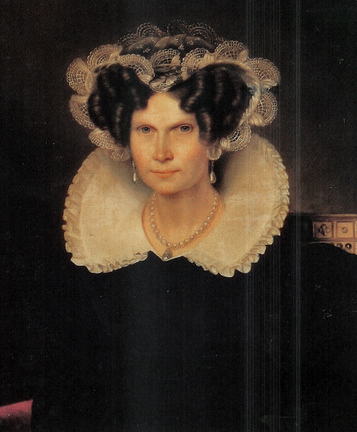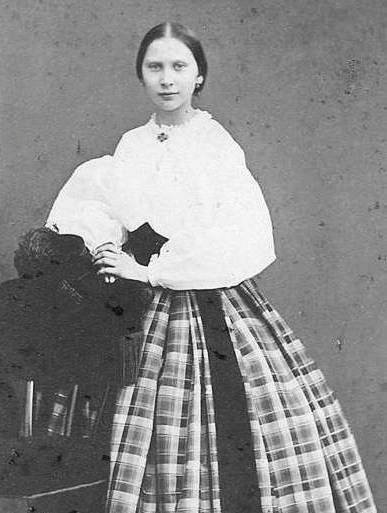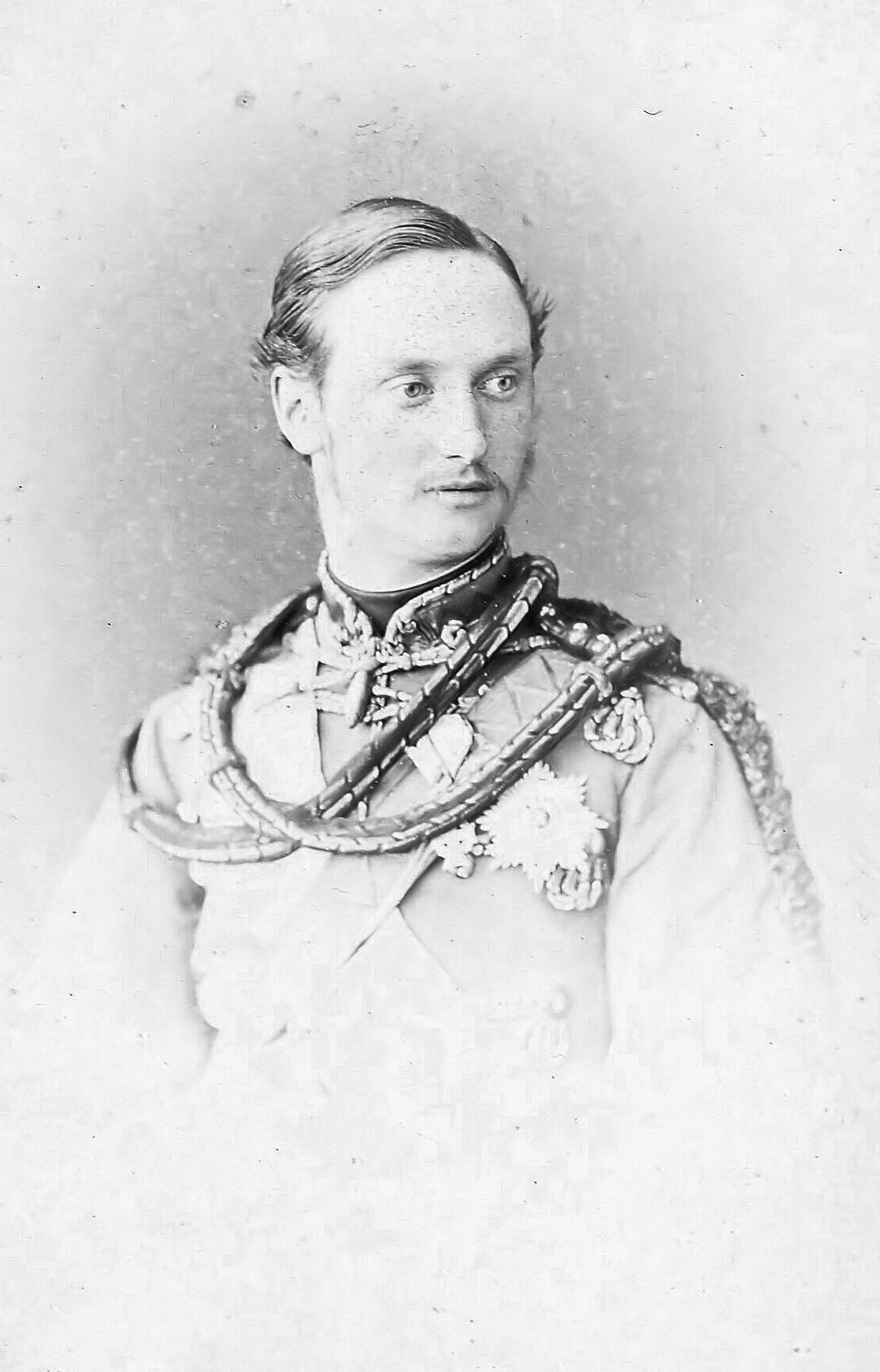by Susan Flantzer © Unofficial Royalty 2015

Emma of Waldeck-Pyrmont, Queen of the Netherlands, Grand Duchess of Luxembourg; Credit – Wikipedia
Her Serene Highness Princess Emma of Waldeck-Pyrmont (Adelheid Emma Wilhelmina Theresia) was born on August 2, 1858, at Arolsen Castle in the town of Arolsen, the capital of the Principality of Waldeck-Pyrmont. Today the town is known as Bad Arolsen and is located in the Waldeck-Frankenberg district of Hesse in Germany. Her parents were George Victor, Prince of Waldeck-Pyrmont and Princess Helena of Nassau. Through both of her parents, Helena was a descendant of Anne, Princess Royal, the eldest daughter of King George II of Great Britain.
Helena, the fourth of seven children, had five sisters and one brother. Her brother Friedrich was the last reigning Prince of Waldeck-Pyrmont. One of her sisters married a future king and another married Queen Victoria’s youngest son. Emma’s father married again after her mother died in 1888, and the only child of that marriage, Emma’s half-brother Wolrad, was killed in action during World War I.
Emma’s siblings:
- Princess Sophie (1854 – 1869), died of tuberculosis
- Princess Pauline (1855 – 1925), married Alexis, Prince of Bentheim and Steinfurt, had issue
- Princess Marie (1857 – 1882), married Prince Wilhelm of Württemberg (after her death King Wilhelm II of Württemberg), had issue, died due to childbirth complications
- Princess Helena (1861 – 1922), married Prince Leopold, Duke of Albany, had one son, Prince Charles Edward, last reigning Duke of Saxe-Coburg and Gotha and one daughter, Princess Alice, last surviving grandchild of Queen Victoria
- Friedrich, Prince of Waldeck-Pyrmont (1865 – 1946), last reigning Prince of Waldeck and Pyrmont, married Princess Bathildis of Schaumburg-Lippe, had issue
- Princess Elisabeth (1873 – 1961), married Alexander, Prince of Erbach-Schönberg, had issue
Emma had one half-brother from her father’s second marriage to Princess Louise of Schleswig-Holstein-Sonderburg-Glücksburg:
- Prince Wolrad of Waldeck and Pyrmont (1892–1914), killed in action in World War I

Emma at 12 years old (1870); Credit – Wikipedia
Emma’s family lived mostly at Arolsen Castle, a Baroque-style home built during 1713-1728. The Scottish philosopher, historian, and writer Thomas Carlyle was a great friend of Emma’s mother and a frequent visitor to Arolsen Castle. Carlyle described life at Arolsen Castle as a “pumpernickel court.” Emma had a Lutheran education from a very liberal-minded pastor. Emma studied crafts, drawing, and French literature with her English governess. She traveled with her family to France, England, Italy, and Scandinavia. In an interview in 1929, Emma said that her mother was at the center of the family life and very active in her children’s education.
In 1877, Queen Sophie, the first wife of King Willem III of the Netherlands died, and Willem was eager to marry again to ensure the future of the House of Orange. One of his three children (all sons), Prince Maurits, had died in 1850 and neither of the other two sons was married. King Willem’s reputation was not a good one. He had many mistresses and many illegitimate children. Queen Sophie had lived apart from him from 1855 until her death. Willem’s ministers had decisively rejected a marriage with a French opera singer and then two eligible princesses refused to marry him. At the suggestion of his only sister, he got in touch with the royal couple of Waldeck and Pyrmont, who had several marriageable daughters. In July 1878, Willem visited the family at their summer home where he met 23-year-old Princess Pauline and 20-year-old Princess Emma. His eyes first fell on Pauline, but soon he chose Emma and proposed to her. Willem was 61 years old, 41 years older than Emma. Emma had lessons in the Dutch language and history before her marriage because she wanted to come to her new country Dutch. The couple was married on January 7, 1879, in Arolsen, Principality of Waldeck and Pyrmont, now in Hesse, Germany. Emma had a positive influence on Willem and the marriage was extremely happy. The last decade of Willem’s life was the best years of his reign.

Willem and Emma; Credit – Wikipedia
In September 1879, Willem’s eldest son Prince Willem died, leaving only one son. A year later Emma and Willem’s only child, a daughter, was born:
- Queen Wilhemina of the Netherlands (1880 – 1962), married Duke Heinrich of Mecklenburg-Schwerin, had one child, Queen Juliana of the Netherlands
The Netherlands followed the Sem-Salic Law which allowed for female succession only if no male dynasts were alive. At the time of Wilhelmina’s birth, her half-brother Prince Alexander and the King’s uncle Prince Frederik were alive, so Wilhelmina was third in the line of succession. Prince Frederik died in 1881 and upon the death of Prince Alexander in 1884, Wilhelmina became the heir presumptive to the Dutch throne, and Emma was appointed to be Regent if Wilhelmina came to the throne before her majority.

Queen Emma and Princess Wilhelmina in 1885; Credit – Wikipedia
In 1888, King Willem’s health began to decline. When it became apparent that Willem could no longer reign, Emma was sworn in as Regent on November 20, 1890. Three days later King Willem III died and ten-year-old Wilhelmina became Queen. Emma took over as Regent for her daughter until Wilhelmina’s eighteenth birthday in 1898. Because a woman could not inherit by the Grand Duchy of Luxembourg at that time, it passed to a distant cousin Adolphe, Duke of Nassau who was also Queen Emma’s maternal uncle.
Emma and Wilhelmina in 1890; Credit – Wikipedia
Emma took her position of Regent seriously. She met personally with every government minister at least once every two weeks and strictly adhered to the rules of the constitutional monarchy. She was open to anyone who wanted to talk to her and insisted that she personally open and handle as much mail as possible. In addition to her administrative duties, Emma paid great attention to her daughter’s education. When Wilhelmina reached the age of 16, Emma considered her childhood over and Wilhelmina spent the next two years being prepped for her job as a reigning queen.

Emma and Wilhelmina in 1897; Credit – Wikipedia
As a reigning queen, the young Queen Wilhelmina insisted on making her own way and tried to resist any pressures from her mother. Occasionally, Wilhelmina had to rely on Emma’s extensive knowledge of protocol matters. Initially, the two queens lived together in Noordeinde Palace, but when Wilhelmina married, Emma retired to the Palace Lange Voorhout. Emma was active in the fight against tuberculosis, then the number one disease. She had lost her sister Sophie to tuberculosis.
In 1909, when Wilhelmina’s only child Juliana was born, planning for an unexpected regency during the minority of Juliana occurred. Wilhelmina’s husband Prince Hendrik (born Prince Heinrich of Mecklenburg-Schwerin) was found unsuitable by the government to act as Regent. Those in the government had fond memories of Emma as Regent and Wilhelmina agreed. If Queen Wilhelmina died while her daughter was still in her minority, Emma would be Regent.

The royal family of the Netherlands in 1930. From left to right: Queen Mother Emma, Princess Juliana, Prince Hendrik, and Queen Wilhelmina; Credit – Wikipedia
Emma died on March 20, 1934, at the age of 75 from pneumonia. She first had a cold which developed into bronchitis and then because there were no antibiotics yet, the bronchitis developed into fatal pneumonia. Her remains were buried in the crypt at the Nieuwe Kerk in Delft, the Netherlands.

The access to the royal crypt in the foreground; Credit – By Sander van der Wel from Netherlands – Royal grave tomb and the grave of Willem van Oranje, CC BY-SA 2.0, https://commons.wikimedia.org/w/index.php?curid=28146859
This article is the intellectual property of Unofficial Royalty and is NOT TO BE COPIED, EDITED, OR POSTED IN ANY FORM ON ANOTHER WEBSITE under any circumstances. It is permissible to use a link that directs to Unofficial Royalty.
Kingdom of the Netherlands Resources at Unofficial Royalty













































